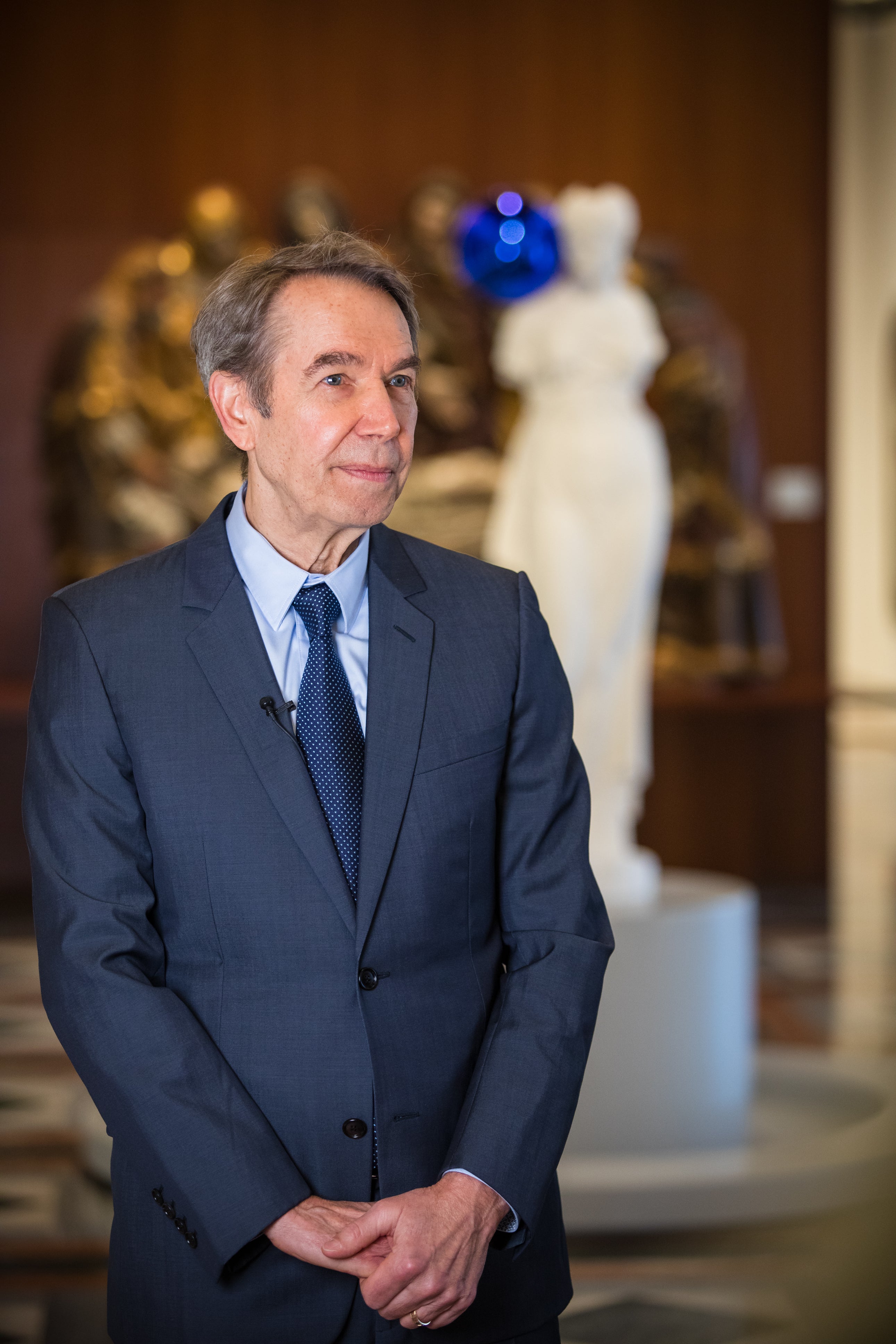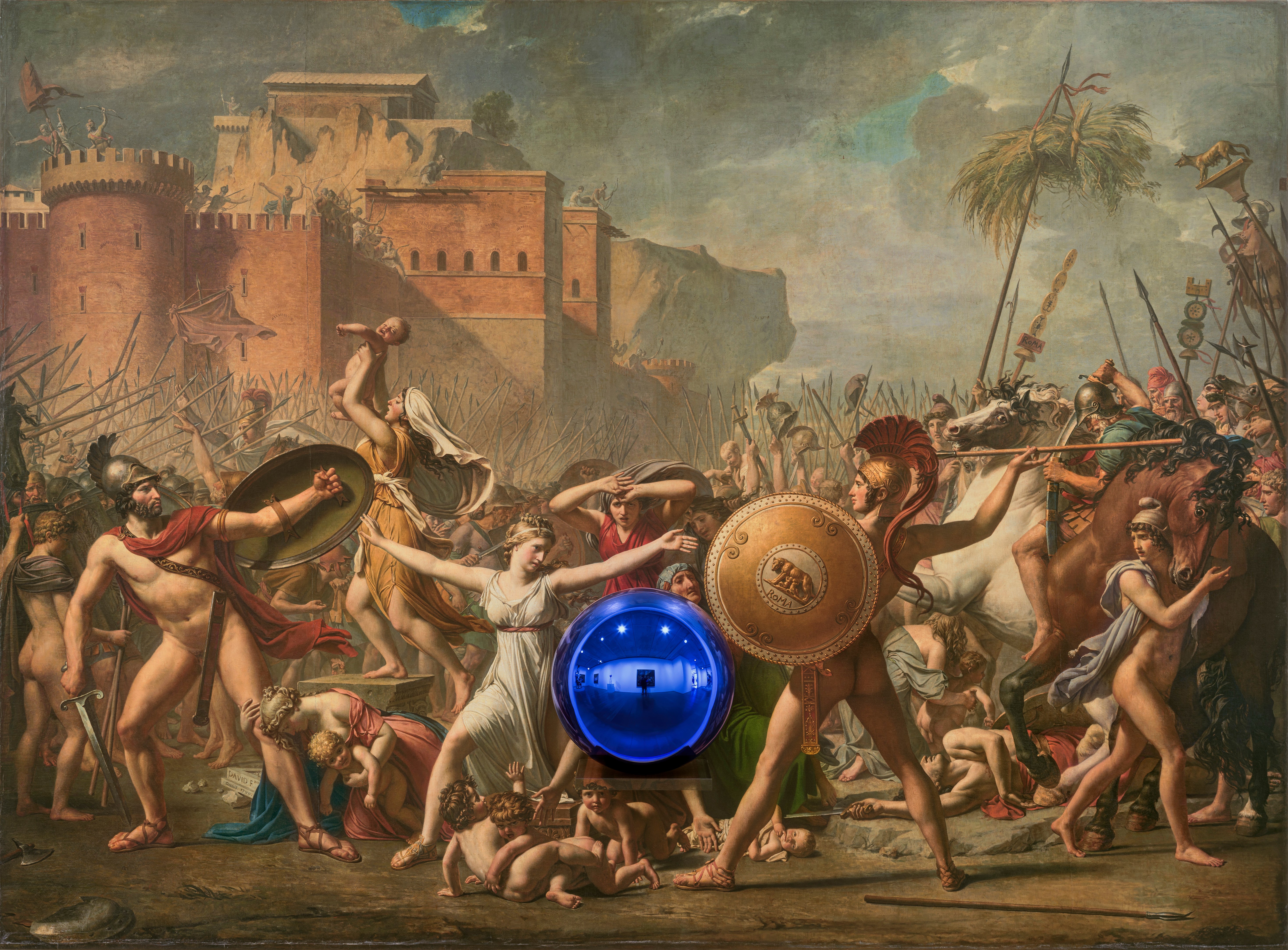Pablo Picasso and Jeff Koons are separated by more than a century, a continent, and artistic philosophies that could hardly be more different.
Yet Reflections, opening in Málaga – the birthplace of Pablo Picasso – is an exhibition that offers a bold exploration of the connections between the 20th-century modernist and one of the most polarising figures in contemporary art.
Koons’ glossy sculptures, with their playful and provocative energy, seem an unexpected counterpart to Picasso’s revolutionary yet often sombre explorations of form and emotion. But according to the museum, Reflections aims to go beyond the surface, drawing on their shared fascination with classical mythology and artistic reinvention.
The Alhambra, one of Spain’s most iconic landmarks, is an apt setting for this experimental dialogue. Its Palace of Charles V, a Renaissance building blending Islamic and Roman architectural influences, reflects centuries of cultural interplay. Against this rich backdrop, the exhibition’s curators aim to explore how these two artists, despite their differences, connect through universal themes.
Koons, who rose to fame with his balloon animals and mirror-polished sculptures, was just 18 and an art school student when Picasso died in 1973. Picasso, by then a towering figure in the history of art, had reshaped modernism and founded movements like Cubism, his career spanning over 70 years.
While Picasso’s Andalusian roots make his inclusion in the museum’s programming natural, Koons represents a deliberate choice to spark fresh discussions about the intersection of tradition and contemporary art. Speaking at the exhibition’s launch, Koons expressed his admiration for Picasso, calling him “the first to realise that everything is open to you if you don’t make judgements.”

A major focal point of Reflections is The Three Graces, a mythical motif that has inspired artists for centuries. Raphael, Rubens, and Canova all immortalised Zeus’s daughters, and Picasso followed suit in 1923 with a two-metre-tall oil painting rendered in subdued grayscale.
Koons’ version of The Three Graces, however, is anything but subdued. Towering and gleaming in mirror-polished stainless steel, the sculpture reflects the 16th-century courtyard of the Alhambra, drawing viewers into its vibrant and festive energy. Originally based on a Meissen porcelain figurine, Koons’ work transforms the classical subject with a playful, almost kitsch aesthetic that contrasts sharply with Picasso’s more introspective approach.
According to the curators, this juxtaposition is precisely the point. By placing Koons’ colourful reinterpretations alongside Picasso’s more restrained works, the exhibition seeks to challenge preconceptions about both artists while demonstrating the enduring relevance of classical themes.

The exhibition also features pieces from Koons’ Gazing Ball series, where he recreates classical paintings and sculptures with the addition of cobalt-blue spheres that distort and reflect their surroundings. One work, based on Jacques-Louis David’s The Intervention of the Sabine Women, offers an unexpected dialogue with Picasso’s 1933 sculpture, Head of a Warrior.
Picasso’s surrealist-influenced warrior, with its tennis-ball eyes and wireframe helmet, pokes fun at traditional notions of heroism. Koons’ adaptation, meanwhile, incorporates his signature reflective sphere, inviting viewers to see themselves within the work.
This interactive quality is central to Koons’ philosophy. Speaking at the launch, he said, “The gazing balls represent everything. They allow the viewer to become part of the work, completing it in a way that’s personal and participatory.”
While the pairing of Picasso and Koons may seem audacious, the curators argue that the connection is rooted in shared values. Both artists challenged conventions, broke boundaries, and redefined what art could be. Picasso introduced collage and everyday objects into fine art, paving the way for Koons’ use of ready-made materials.
Koons acknowledged this debt during his remarks, saying, “Picasso was really the first to show that you could take the world around you—whether it’s a tablecloth, a bottle, or a piece of scrap metal—and make it art. That openness is something I’ve always admired and aspired to in my own work.”

Pairing past masters with contemporary artists has become a popular trend in the art world, but Reflections stands out for its ambitious scope. With just five works on display, the exhibition relies heavily on the dialogue it creates rather than sheer volume.
The Museo Picasso Málaga has described the exhibition as the first in a series of innovative shows designed to bring new perspectives to Picasso’s legacy. While some visitors may initially approach the pairing with scepticism, the curators hope the exhibition will leave them reflecting on the ways art can transcend time and context.
For Koons, who is nearing his 70th birthday, the exhibition also carries a personal significance. “I am very partial to Picasso’s late work,” he said. “It’s astonishing—the energy he had late in life. It tells us all, ‘You can do that too.’ To transform, to become something, even in your later years—it’s incredibly inspiring.”
As Málaga prepares to host visitors from around the world, Reflections offers a chance to reconsider two of art’s most influential figures. It’s not just an exhibition about Picasso or Koons but about the timeless themes they explored—mythology, reinvention, and the breaking of artistic boundaries.
Whether it’s Koons’ vibrant reinterpretations or Picasso’s introspective visions, Reflections is an invitation to see these artists in a new light, not as opposites but as part of a shared continuum.
“Reflections: Picasso/Koons” is on show at the Alhambra in Granada, Spain, until 16 March 2025.



